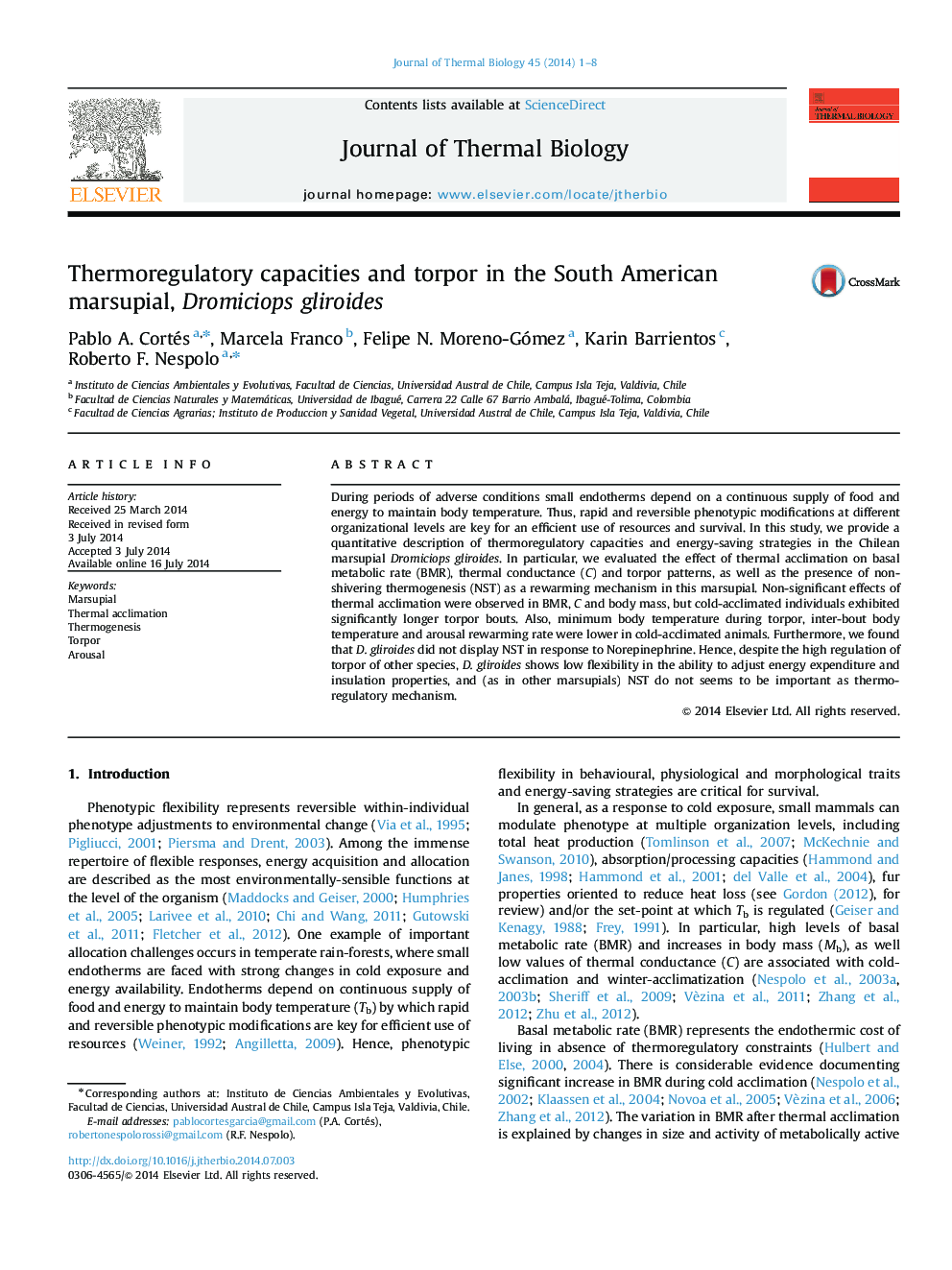| Article ID | Journal | Published Year | Pages | File Type |
|---|---|---|---|---|
| 2842872 | Journal of Thermal Biology | 2014 | 8 Pages |
•We found that D. gliroides did not display NST in response to Norepinephrine.•No flexibility in basal metabolic rate was observed after thermal acclimation.•Wet thermal conductance does not change after thermal acclimation.
During periods of adverse conditions small endotherms depend on a continuous supply of food and energy to maintain body temperature. Thus, rapid and reversible phenotypic modifications at different organizational levels are key for an efficient use of resources and survival. In this study, we provide a quantitative description of thermoregulatory capacities and energy-saving strategies in the Chilean marsupial Dromiciops gliroides. In particular, we evaluated the effect of thermal acclimation on basal metabolic rate (BMR), thermal conductance (C) and torpor patterns, as well as the presence of non-shivering thermogenesis (NST) as a rewarming mechanism in this marsupial. Non-significant effects of thermal acclimation were observed in BMR, C and body mass, but cold-acclimated individuals exhibited significantly longer torpor bouts. Also, minimum body temperature during torpor, inter-bout body temperature and arousal rewarming rate were lower in cold-acclimated animals. Furthermore, we found that D. gliroides did not display NST in response to Norepinephrine. Hence, despite the high regulation of torpor of other species, D. gliroides shows low flexibility in the ability to adjust energy expenditure and insulation properties, and (as in other marsupials) NST do not seems to be important as thermoregulatory mechanism.
